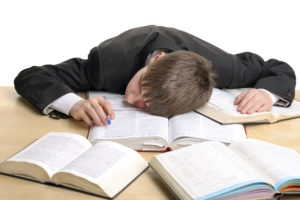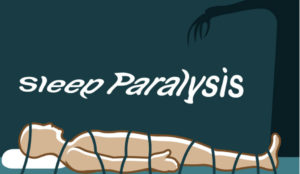Narcolepsy is a clinical syndrome of daytime sleepiness, cataplexy (sudden bilateral loss of muscle tone), hypnagogic hallucinations, and sleep paralysis. Only one-third of patients will have all of these classical findings.
Download the brochure
Epidemiology: The prevalence of Narcolepsy type 1 is 25 to 50 per 100,000 people. The incidence rate is highest in the second decade. The disorder is equally common in men and women. The onset associated with nonspecific environmental factors, such as head trauma, stroke, and change in sleep-wake cycle.
Etiology: Narcolepsy Type 1 results from the loss of the neuropeptides orexin (hypocretin), which promote wakefulness and in regulating of the sleep-wake cycles.
Secondary narcolepsy: lesions of the posterior hypothalamus and mid brain can cause narcolepsy. Most likely due to direct injury to the orexin neurons.
Clinical Presentation:
1-Daytime sleepiness: all patients with narcolepsy have chronic sleepiness. They are prone to fall asleep throughout the day, often at inappropriate times. The sleepiness may be so severe that patients with narcolepsy can doze off with little warning; these episodes are the “sleep attacks”. Sleepiness associated with narcolepsy usually improves temporarily after a brief nap, and most patients feel rested when they awake in the morning.
2-Cataplexy: It is emotionally triggered transient muscle weakness. The muscle weakness is often partial, affecting the face, neck, and knees. Severe episodes can induce bilateral weakness or paralysis, causing the patient to collapse. Consciousness remains intact during cataplexy, and the weakness usually resolve in less than two minutes
3-Hypnagogic hallucinations: Which are vivid, often frightening visual, tactile, or auditory hallucinations that occur as the patient is falling asleep.
4-Sleep paralysis : Sleep paralysis is the complete inability to move for one or two minutes immediately after awakening. Read more…
download sleep paralysis brochure.
HYPERSOMNIA
What is Hypersomnia?
Many people feel drowsy in early afternoon and they have a desire for a quick nap. This is probably normal and different from excessive daytime sleepiness, which is a much more significant problem. Hypersomnia is a disorder of excessive sleepiness as evidenced by either prolonged sleep episodes or daytime sleep episodes that occur almost daily and will cause clinically significant distress or impairment in social, occupational, or other important areas of functioning.
What is Causing Excessive Daytime Sleepiness?
The prevalence of excessive daytime sleepiness, reported by up to 30% of the adult population.
Sleep Deprivation
By far, the most common cause of excessive daytime sleepiness in modern society is chronic sleep deprivation. Healthy adults can require anywhere from 4 to 10 hours of sleep. Therefore, people who need 8 hours of sleep a night but receive only 6 hours may become severely sleep deprived and notably hyper somnolent.
Primary Hypersomnia
Is excessive sleepiness for at least 1 month and is not related to other mental disorder or direct physiological effects of a substance (eg, drug of abuse, medication).
Excessive daytime sleepiness leading to prolonged naps that are not refreshing, nocturnal sleep of long duration (as much as 12 h or more) and sleep drunkenness. These patients do not feel refreshed following naps and, therefore, fight sleepiness as long as they are able. Patients are difficult to awaken from sleep or naps.
Before a diagnosis of primary hypersomnia, all other causes of hypersomnia, should be excluded, so elimination of other causes of excessive daytime somnolence helps diagnose primary hypersomnia
Medication-Induced Hypersomnia
Certain agents may cause true hypersomnia. sedative-hypnotic agents, such as barbiturates, benzodiazepines and Many medications such as tricyclic antidepressants and antihistaminic agents may cause drowsiness.
Other Medical Conditions May Cause Hypersomnia
Obstructive sleep apnea
Posttraumatic hypersomnia
Brain tumors
Metabolic disorder such as hypothyroidism
Seizure disorder
Hydrocephalus
Depression


